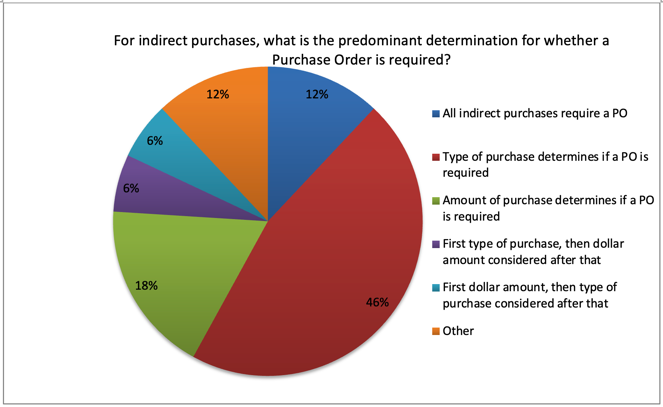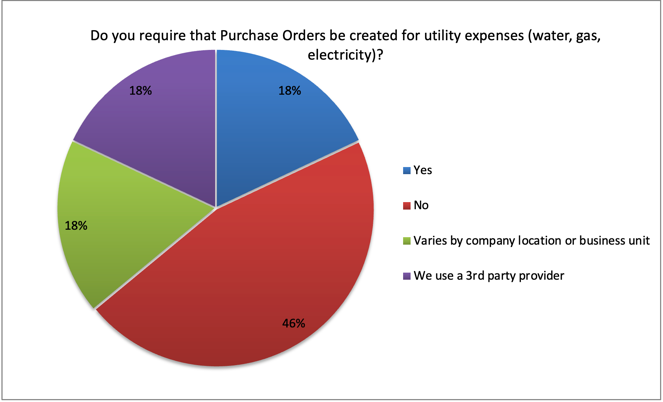When Do You Require a Purchase Order for Indirect Spend?
Introduction
For Accounts Payable departments, transactions that are require little to no human intervention are the most efficient and require the least amount of resources. While processing invoices without an associated purchase order is also straight-forward, the reality is that by not having a purchase order there are many possible problems, including a greater risk of duplicate payments, purchases that are not pre-approved, purchases that don’t take advantage of negotiated prices, purchases from new vendors requiring new set-up, and the possibility of difficulties with the purchased items or purchased services.
While Accounts Payable is typically aligned with the Finance function, the reality is that AP is one of the final steps in the overall purchase to pay process, where “purchase” is significantly more important than “pay”. When acquiring goods or services, having purchasing involved is usually the best alternative, and doing so typically means a purchase order is required.
Polling Results Review
The results from a Peeriosity poll provides insight into the various approaches Peeriosity-100 members take regarding purchase order requirements for indirect spend. Only 12% of responding companies indicated that a purchase order was required for all indirect spend. The largest category, at 46%, indicted that the type of purchase determined if a purchase order is required, with 18% indicating dollar amount was the predominant factor. 12% indicated a mix of dollar amount and purchase type, and 12% selected “Other” and commented that it was dependent of the payment mechanism (for example, purchasing card transactions do not require a purchase order).

The second polling question looked whether or not a purchase order was required for utility payments. The results indicate that only 18% require a purchase order for utility payments and 46% do not require a purchase order. For an additional 18% the requirement varies by company location or business unit, and for the balance of 18% they use a 3rd party provider to process utility invoices, so utility payments are not processes inhouse.

A few of the comments from members include:
- We have a very short list of categories of purchase that can be non-PO.
- We have a third-party provider that manages all utility audit and payment processes.
- In US we use a 3rd party Utility vendor to audit and process the transactions, so US and CAD is non-PO. Rest of globe uses PO for utilities.
- Most utility expenses are paid through a third party.
- We require POs for all purchases except for low dollar purchase where they can use their corporate card.
- Our preferred approach is to issue a PO for all indirect spend. There are situations where a PO is not accepted (e.g., some utilities), but we work to minimize the exceptions.
- Capitalized purchases require a PO. Many of our punch-out catalogs have a PO created automatically.
Closing Summary
By having a professional purchasing department with buyers who can negotiate prices and take actions to evaluate the quality of materials and services, the use of a purchase order is a valuable mechanism. However, for some indirect purchases, requiring purchasing involvement may be both inefficient and unnecessary.
For indirect purchase at your company, how do you determine if a purchase order is required? What approach do you take when the indirect spend is for utilities?
Who are your peers and how are you collaborating with them?
____________________________________________________________________________
“Polling” is available exclusively to Peeriosity-100 member company employees, with consultants or vendors prohibited from participating or accessing content. Members have full visibility to all respondents and their comments. Using Peeriosity-100’s integrated email system, Peer Mail, members can easily communicate at any time with others who participated in Polling.

